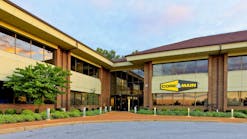In 2007 and 2008, two twin force mains along Malibu Canyon Road in Malibu, Calif., experienced several small failures. An investigation was conducted to determine the cause of the failures and assess the overall condition of the force mains. The study found that the force mains were deteriorating as a result of hydrogen sulfide corrosion on the interior and corrosive soils on the exterior. The amount of corrosion was extensive, with the location of the corrosion sporadic throughout both force mains.
Consultant Mladen Buntich Construction (MBC) determined that the most cost-effective solution was to completely rehabilitate both force mains, which would repair the pipe and prevent future problems. The side-by-side force mains ran roughly 4.5 miles along Malibu Canyon Road near the Tapia Water Reclamation Facility, more than 9 miles of rehabilitation.
MBC brought in Insituform to perform the rehabilitation using cured-in place pipe (CIPP) lining. The InsituMain System, a fiber-reinforced CIPP tube, provided a fully structural, AWWA Class IV solution for the pressurized mains.
Challenges encountered during execution included diverting all wastewater flow to other facilities during construction and sequencing the work to keep at least one force main available at all times. This was necessary in order to maintain the area’s reclaimed water supply during the construction period. Additionally, the work was done within two separate jurisdictions—one that required daytime work and another that required nighttime wo rk. Because Malibu Canyon Road is a two-lane road, often with no shoulder, the work had to be sequenced to minimize traffic impact.
The entire 48,000-ft project was completed during a three-month window. Combined with various sequencing parameters, finishing the project in that timeframe proved to be a difficult undertaking. Despite the many challenges presented to the construction team, the work was completed under budget and on time.
Download: Here






